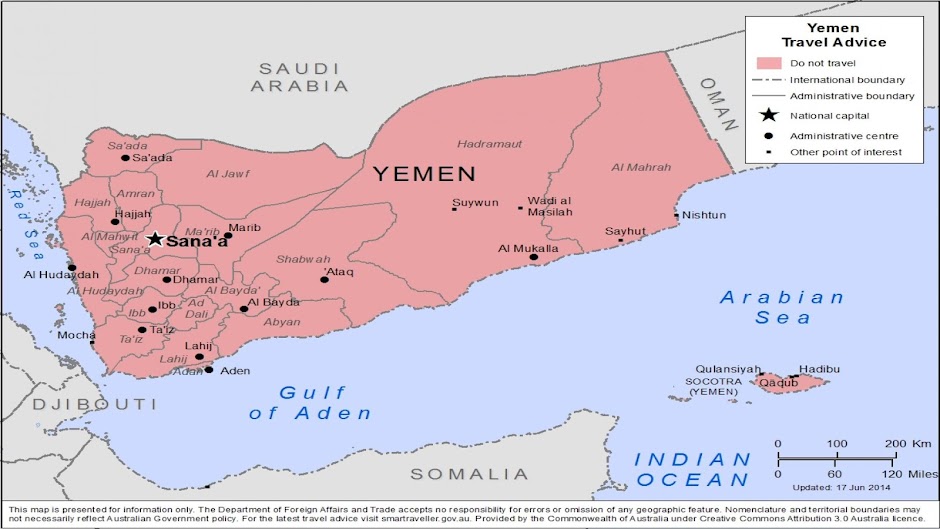Throughout most of its history, Ibb had sat on the caravan route from Aden to Sana’a as well as pilgrimage route to Yemen, ensuring that it was never lacking in customers while maintaining its position as a trade centre.
The Old city of Ibb makes for a pleasant stroll. Most of the roads cannot be navigated by cars, giving it a distinctly different feel from the rest of the city. The houses are built differently from those of other Yemeni cities by their use of stone blocks.
Much of the woodwork you will see on the older doors was done by the population of Jewish artisans who lived in the city before 1948. There is a number of historically important buildings in the Old City, some of which date back before the advent of Islam such as al-Bayada reputed to have been built for a air-skinned Himyarite princess.
There are several important mosques in the old city. The Old Mosque was built during the reign of the second Muslim caliph, “Omar ibn al-Khatab.” The more aesthetically appealing mosque and red-brick minaret of al-Jalaliyya dates to the 18th-century Ottoman occupation.
Outside the Old City, the small tourist facility on top of Jabal Rabi (the mountain of My Lord) offers panoramic views of the city and surrounding countryside.
The fortress of Husn al-Habb (fortress of Grain sits on the mountain of Jabal Ba’dan). It is inaccessible by car, but a 30-minute to one-hour walk on the path leads up to the ruined remains. Surrounded by three walls and a sharp cliff face, Husn al-Habb was noted by the medieval Yemeni historians as being one of the strongest fortresses in the country.
Jiblah
The town of Jiblah is a small, quiet village tucked away between two wadis that is dominated by its larger neighbour, Ibb- only 8km away. In the past, Jiblah was the seat of power of one of Yemen’s greatest and most fondly remembered rulers. Queen Sayyida Arwa bint Ahmed ruled most of Yemen from the town during one of the country’s most brilliant periods.
In the 11th century the future Queen Arwa was born in the Haraz mountains as Sayyida bint Ahmed while “Ali ibn Sulayhi, her uncle and future fathe-in-law, had conquered and ruled most of Yemen. Arwa was educated within the royal palace at Sana’a under the tutelage of “Ali al-Sulayhi’s wife, Queen Asma.
Queen Arwa moved the state capital from Sana’a to Jiblah sometime after she assumed control in 1063. When she made the move, Jiblah was a small city that had been built 25 years prior – only slightly older than Arwa herself. The town was named after a Jewish potter who may have still been working there when Arwa transferred her seat of authority.
Arwa’s choice in Jiblah reflected the style of her rule well. Arwa was known to rule for the most part by wit and diplomacy. Queen Arwa was concerned with public works, trade, and religion.
It is very interesting, of course, to see the fond attachment Yemenis have to Queen Arwa- for a woman who ruled by diplomacy, she is revered as one of the greatest Yemeni leaders by conflict-prone, male-oriented Yemenis.
The historian Omarah wrote that Queen Arwa was: “perfect in beauty, of a clear-sounding voice, well read and skilful writer, her memory stored with history, with poetry, and with the chronology of past times”. Ask a Yemeni about her today- you will probably get a similar response.
The tomb of Queen Arwa is situated near the northern wall of the Queen Arwa Mosque. There are two minarets- the one by the southwest corner dates back to the construction of the mosque, although there have been several renovations since then. In the courtyard of the Mosque the visitor will be able to peer through the windows into the prayer hall.
One should, also, visit Sheikh Yakub Mosque (the mosque of Jacob). The villagers claim that this mosque is the oldest one in Jiblah, having existed as the town’s sole mosque before Arwa arrived and transformed the old palace into the grander mosque bearing her name.
Below the Sheikh Yakub Mosque, in the lower part of the town, there are several stone-arched bridges, one of which is said to date back to the time of Queen Arwa.


